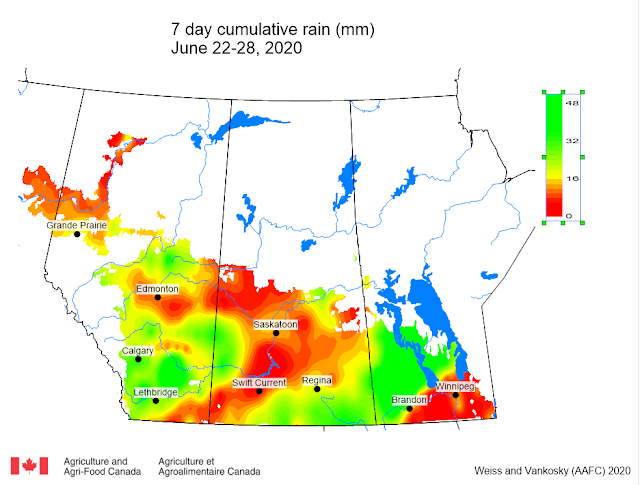Table 1. Seven-day temperature and rainfall summary (June 22-28, 2020).
 |
| Figure 1. Observed average temperatures across the Canadian prairies for the past seven days (June 22-28, 2020). |
Average 30-day (May 30 - June 28, 2020) temperatures continue to be cooler in Alberta and areas north of Saskatoon than in southern Saskatchewan and Manitoba (Table 2, Fig. 2). The average 30-day temperature at Winnipeg and Brandon continues to be greater than locations in Alberta and Saskatchewan (Table 2). Based on growing season temperatures (April 1 – June 28, 2020), conditions were warmest for southern locations (Table 3).
Table 2. 30-day temperature and rainfall summary (May 30 -June 28, 2020).
 |
| Figure 2. Observed average temperatures across the Canadian prairies for the past 30 days (May 30-June 28, 2020). |
Table 3. Temperature and rainfall summary for the growing season (April 1 - June 28, 2020).
Cumulative rainfall for the past 7 days was variable (Table 1; Fig. 3). Lethbridge reported 23.3 mm and 7.7 mm was recorded at Swift Current (Table 1). Cumulative 30-day rainfall was greatest across central regions of Alberta (Table 2; Fig. 4). Rainfall amounts were lower across the southern prairies (Fig. 4). Total 30-day rainfall at Winnipeg, Brandon, Regina and Swift Current has been less than 65 mm (Table 2; Fig. 4). Rainfall amounts have been greater across central regions of Alberta and Saskatchewan (Fig. 4). Saskatoon has reported 131.9 mm (279% of normal) in the past 30 days (Fig. 5). Growing season rainfall (percent of average) is below normal southern Saskatchewan and most of Manitoba (Fig. 5; Table 3). Rainfall amounts are above average across central regions of Saskatchewan and across Alberta (Fig. 5; Table 3).
 |
| Figure 3. Observed cumulative precipitation across the Canadian prairies for the past seven days (June 22-28, 2020). |
 |
| Figure 4. Observed cumulative precipitation across the Canadian prairies for the past 30 days (May 30-June 28, 2020). |
 |
| Figure 5. Percent of average precipitation for the growing season (April 1-June 28, 2020). Image has not been reproduced in affiliation with, or with the endorsement of the Government of Canada and was retrieved (28Jun2020). Access the full map at http://www.agr.gc.ca/DW-GS/current-actuelles.jspx?lang=eng&jsEnabled=true&reset=1588297059209 |
The growing degree day map (GDD) (Base 5 ºC, April 1-June 30, 2020) is below (Fig. 6):
 |
| Figure 6. Growing degree day map (Base 5 °C) observed across the Canadian prairies for the growing season (April 1-June 30, 2020). Image has not been reproduced in affiliation with, or with the endorsement of the Government of Canada and was retrieved (02Jul2020). Access the full map at http://www.agr.gc.ca/DW-GS/current-actuelles.jspx?lang=eng&jsEnabled=true&reset=1588297059209 |
The growing degree day map (GDD) (Base 10 ºC, April 1-June 30, 2020) is below (Fig. 7):
 |
| Figure 7. Growing degree day map (Base 10 °C) observed across the Canadian prairies for the growing season (April 1-June 28, 2020). Image has not been reproduced in affiliation with, or with the endorsement of the Government of Canada and was retrieved (02Jul2020). Access the full map at http://www.agr.gc.ca/DW-GS/current-actuelles.jspx?lang=eng&jsEnabled=true&reset=1588297059209 |
The highest temperatures (°C) observed the past seven days ranged from <17 to >32 °C in the map below (Fig. 8).
 |
| Figure 8. Highest temperatures (°C) observed across the Canadian prairies the past seven days (April 1-June 28, 2020). Image has not been reproduced in affiliation with, or with the endorsement of the Government of Canada and was retrieved (02Jul2020). Access the full map at http://www.agr.gc.ca/DW-GS/current-actuelles.jspx?lang=eng&jsEnabled=true&reset=1588297059209 |
Finally, the map below reflects how many days >25 °C have occurred so far across the prairies as of June 30, 2020 (Fig. 9).
 |
| Figure 9. Number of days with temperatures above 25 °C)observed across the Canadian prairies this growing season (April 1-June 30, 2020). Image has not been reproduced in affiliation with, or with the endorsement of the Government of Canada and was retrieved (02Jul2020). Access the full map at http://www.agr.gc.ca/DW-GS/current-actuelles.jspx?lang=eng&jsEnabled=true&reset=1588297059209 |
The maps above are all produced by Agriculture and Agri-Food Canada. Growers can bookmark the AAFC Current Conditions Drought Watch Maps for the growing season. Historical weather data can be access at the AAFC Drought Watch website, Environment Canada's Historical Data website, or your provincial weather network.


